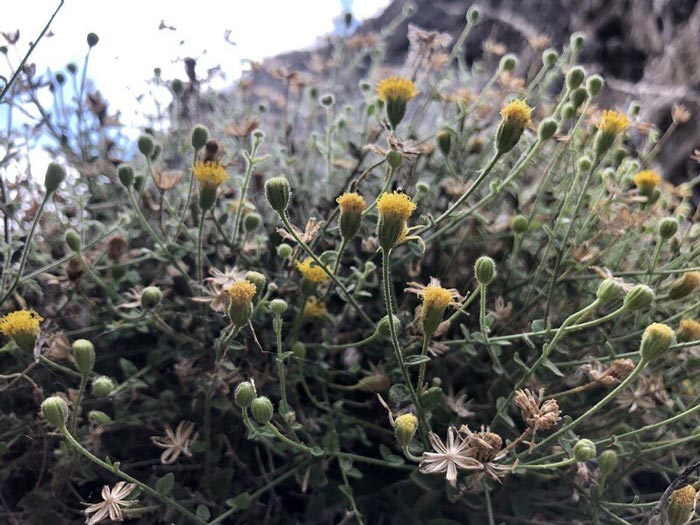October 28, 2024 – SACRAMENTO, CA – The Center for Biological Diversity filed a formal notice on Thursday of its intent to sue the U.S. Fish and Wildlife Service for failing to protect the critically imperiled Inyo rock daisy under the Endangered Species Act. The rock daisy, already listed as threatened under the California Endangered Species Act, faces mounting threats from gold mining in its region.
“A company determined to dig up the Inyo Mountains in its search for gold could destroy most of the Inyo rock daisy’s only home,” said Meredith Stevenson, a staff attorney at the Center. “We’ve been working to save this rare species from extinction for years, and we’re not giving up now. The Fish and Wildlife Service needs to do its job and protect these delicate little wildflowers as the law requires.”

(Pictured) Inyo rock daisy. Photo credit: Cheryl Birker
The Inyo rock daisy is a rare wildflower found only at the highest elevations of the southern Inyo Mountains, between the Eastern Sierra and Death Valley National Park in California. It lives on ancient carbonate bedrock that possibly holds submicroscopic gold, and a large-scale gold mining project is proposed in one of the few places the wildflowers live, Conglomerate Mesa.
Following the Center’s 2022 petition, the Service in March 2023 found the Inyo rock daisy may warrant federal protection under the Endangered Species Act. However, the agency has yet to grant the wildflowers endangered species protections.
Most of the wildflower’s range is part of the National Conservation Lands System, but these conservation lands remain open for development under the antiquated 1872 Mining Law. This area includes the Cerro Gordo and Conglomerate Mesa areas of critical environmental concern, which were designated to protect numerous sensitive plant species, Joshua tree woodlands, and other nationally significant values, including cultural ones.
In 2019 Canadian mining company K2 Gold claimed to have found evidence of a large gold deposit in the area. The U.S. Bureau of Land Management is reviewing the company’s proposal to conduct additional exploration activities in the plant’s habitat. If commercially viable quantities of gold are found, the area could be developed into a large open-pit mine, which would permanently destroy the Inyo rock daisy’s prime habitat.
Blooming during the heat of the summer when other desert plants have gone dormant, the Inyo rock daisy sports bright yellow flowers that attract many insect visitors. The pollinators are a critical part of the wildflower’s life cycle since pollen from distant flowers is needed for reproduction.
In addition to habitat loss from an open-pit mine, mining operations would likely harm plant reproduction by fragmenting habitat and driving away pollinators. The daisy is also threatened by invasive plants, climate change and harmful genetic consequences because of its small population size.
“Each one of these plants on Conglomerate Mesa is critical for the species’ recovery,” said Stevenson. “It’s totally unacceptable that the Service is dragging its feet while the Bureau of Land Management considers plans for exploratory drilling that could push this rare flower toward extinction.”
The 2022 federal listing petition was filed by the Center for Biological Diversity, California Native Plant Society and botanist Maria Jesus.
The Center for Biological Diversity is a national, nonprofit conservation organization with more than 1.7 million members and online activists dedicated to the protection of endangered species and wild places.
Source: Center for Biological Diversity








